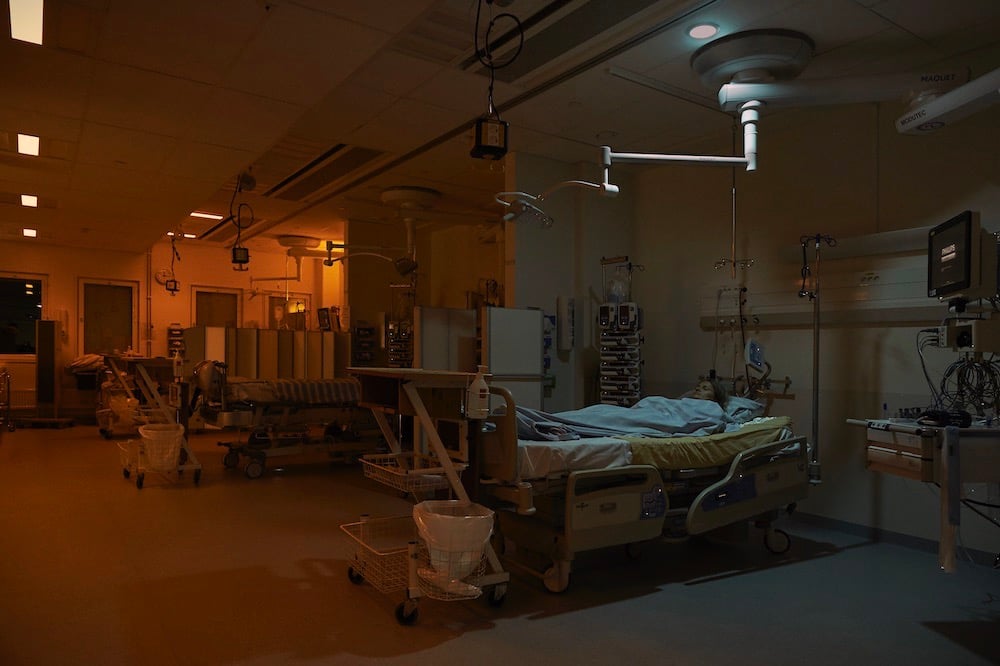By implementing Circadian Lighting in both the wake-up and intensive care units, Centralsjukhuset in Karlstad has created an optimal lighting environment for both patients and staff.
In 2015, the newly constructed building at Centralsjukhuset in Karlstad implemented Circadian Lighting in the wake-up unit, UVA. Its value was quickly realized, leading the hospital to expand the use of Circadian Lighting to the intensive care unit, IVA, in 2017. As a result, the hospital now boasts a comprehensive lighting solution from Chromaviso, with all 27 operating rooms also equipped with health-promoting specialty lighting.
— It makes a significant difference compared to traditional lighting. Now that we know it works in our renovated section of the department, we also want to have it in the rest, says Hans Renberg, a nurse at Centralsjukhuset Karlstad.
Backed by scientific research
Chroma Zenit Circadian Lighting from Chromaviso is based on knowledge about circadian rhythm, sleep, and light. In 2017, a groundbreaking clinical study on circadian lighting was published by Rigshospitalet, the first of its kind. The results showed that Chroma Zenit Circadian Lighting has a significant positive effect on critical treatment factors such as circadian rhythm, depression, and fatigue among patients.
At IVA in Karlstad, circadian lighting has been an essential part of efforts to stabilize patients' circadian rhythm and overall condition, explains department manager Carina Eriksson.
— We focus on creating a circadian rhythm for our patients as it has an impact on their healing and recovery. The circadian rhythm is also crucial in preventing patients from losing track of the time of day. This is where circadian lighting plays a vital role, she says.

Customized for each patient
The circadian lighting provides an opportunity to create a calm environment around the patient in the complex hospital setting. The lighting is divided into zones, allowing the staff to adjust the light individually for each patient.
Improved work environment
For the staff, circadian lighting has meant an improvement in the work environment and overall well-being.
—I walk between the different departments, and there is a big difference in the lighting. With circadian lighting, it is very bright during the day, and the staff feels more refreshed. We experience less fatigue, and the lighting is delightful for the eyes and the mind. Additionally, we can see details better in the circadian lighting because it provides excellent spot illumination, explains Carina Eriksson.
The enhanced work environment also contributes to making the hospital an attractive workplace.
Specially designed night light
During the night, the patient's area is kept dark to support a restful sleep. However, when the staff needs to attend to a patient, they can activate either a warm amber night light or, if more illumination is required, a warm white work light. In urgent situations, full light can be turned on.
The nighttime lighting is broad-spectrum and free from blue tones that disrupt the body's circadian rhythm. At the same time, it provides a safe and effective light for the staff to navigate and work in.

Both the IVA and UVA units have Chroma Zenit Circadian Lighting throughout the department. This holistic solution caters to the needs of both patients and staff.
User-friendly control panel
The lighting is controlled at each bedside through an intuitive user interface with icons and text, developed in collaboration with the staff.
— We have zone-specific circadian lighting for each patient, ensuring that other patients are not disturbed when the light is turned on for one patient. This approach allows us to focus on each individual patient and avoid unnecessary disruptions, concludes Carina Eriksson.

